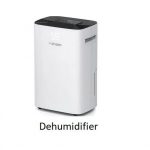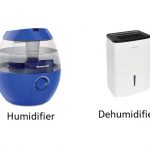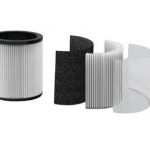What is a Dehumidifier and How it works?
A dehumidifier is an appliance that reduces as well as maintains the level of humidity in the air by extracting water from the air.
How do dehumidifiers work? (how it works)?
A dehumidifier sucks in air from your room, removes the moisture from it and then pushes it back out into the room. They essentially extract water from air that passes through the unit. They do this in two ways; either as condensate dehumidifiers or desiccant dehumidifiers.
Condensate dehumidifiers make use of a refrigerator to collect water known as condensate. They work by cooling air to remove moisture using similar technology to a refrigerator or air conditioner. Some dehumidifiers also use reverse osmosis filters to convert the condensate into potable water and others like the ionic membrane dehumidifiers, dispose of water as a vapor rather than liquid.
Desiccant dehumidifiers sometimes called absorption dehumidifiers combine moisture with hydrophilic materials such as silica gel. With this type, moisture is absorbed into or adsorbed onto a drying material and then removed. Larger units contain hot air systems in order to remove humid air from outside the room.
Common and useful Features of dehumidifiers
- Pint Capacity: which is a measure of the amount of moisture removed in 24 hours
- Low Temperature Operation: can it operate at temperatures below 65 degrees Fahrenheit
- Noise level: Some units can be really noisy so consider a dehumidifier that offers quiet operation.
- Water tank capacity: A storage tank for the collected water that you have to empty periodically. Larger tanks need to be emptied less frequently.
- Continuous Drain Function: that helps with emptying of the water tank by letting the collected water continuously flow out through a hose into a sink or a drain.
- Automatic shut-down: a function that shuts down the appliance when the water tank is in danger of overfilling.
- Automatic Humidistat or Hydrostat: monitors the moisture content in the air and will automatically turn the dehumidifier on and off to keep your chosen humidity level.
- Timer Function: This allows you to program the dehumidifier to turn on and/or off after a selected amount of time.
- Caster Wheels or Handle: a carrying handle for easy portability or for larger dehumidifiers, wheels so you can avoid lifting it.
- Energy rating: Dehumidifiers have ratings from A to G with an A-rating being the most efficient. A-rated models most certainly help to keep operating costs low.
- Washable filter: Dust Filters that you can easily wash with soap and water
Conclusion (Should you get a dehumidifier)?
Yes, you should get a dehumidifier. Dehumidifiers help to fight condensation, prevent mold growth and also reduce dampness on walls. Dehumidifiers make your home less friendly to allergens like dust mites, mold, and mildew. So whether you want a dehumidifier for health or comfort reasons, or to eliminate musty odor or to prevent the growth of mildew, dehumidifiers are definitely a must have in your home appliance arsenal.
Featured Posts
Latest Posts
- 5 Best Humidifier For COPD
- 5 Best Humidifiers For Greenhouse
- 5 Best Humidifiers For Electric Heat
- 5 Best Humidifiers For Pregnant Women
- 5 Best Humidifiers For Yoga Studio
- 5 Best Humidifiers For Eczema
- 5 Best Air Purifiers with Permanent Filters
- 5 Best Air Purifier With A Humidifier
- 5 Best Air Purifiers For Resin Printing
- 5 Best Air Purifiers for Eczema
- 5 Best Air Purifier With Fan Combo
- 5 Best Air Purifier For Lung Disease
- 5 Best Humidifiers For Essential Oils
- 5 Best Humidifiers for Elderly
- 5 Best Humidifiers For Lash Extensions
- 5 Best Humidifiers For Cough
- 5 Best Humidifiers For Fireplace
- 5 Best Humidifiers for Humidor
- 5 Best Humidifiers For Pets
- 5 Best Humidifiers For Weed



